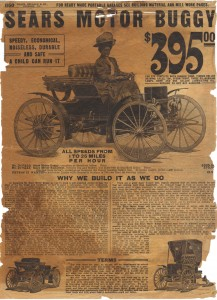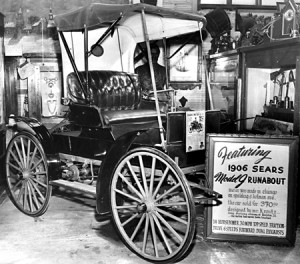1909 Sears Motor Buggy
- Story Cars
.png/v1/fill/w_320,h_320/file.jpg)
- Mar 20, 2024
- 1 min read
The 1909 Sears Motor Buggy represents a fascinating chapter in the history of transportation in America, particularly during the early 20th century. As Sears, Roebuck & Co. flourished as a retail giant with its renowned mail-order catalog, it expanded its offerings to include automobiles from 1909 to 1912.
Priced at an affordable $395.00, the Sears Motor Buggy was accessible to both urban and rural customers alike. It provided a convenient and reliable alternative to horse-drawn vehicles, boasting features such as a top, rubber tires, and headlamps. With a maximum speed of 25 M.P.H., it offered practical transportation for everyday use.
The accessibility of the Sears catalog made purchasing an automobile as easy as ordering any other product. Customers could receive their motor buggy at the nearest train station, assemble it quickly, and begin enjoying the benefits of motorized transportation. This accessibility made the motor buggy popular among customers across different regions.
Despite its appeal to consumers, the venture into automobile manufacturing proved to be a financial loss for Sears. In 1912, the company sold the manufacturing rights, signaling the end of its foray into the automotive industry.
The 1909 Sears Motor Buggy, like many vehicles of its time, symbolizes a significant shift in transportation and urban development in America. Its inclusion in various local races and eventual restoration highlights its historical significance and contribution to the transportation revolution of the era. Today, it serves as a reminder of a simpler time and the transformative impact of automobiles on society.
Source & Images: CarsThatNeverMadeItEtc


































Comments